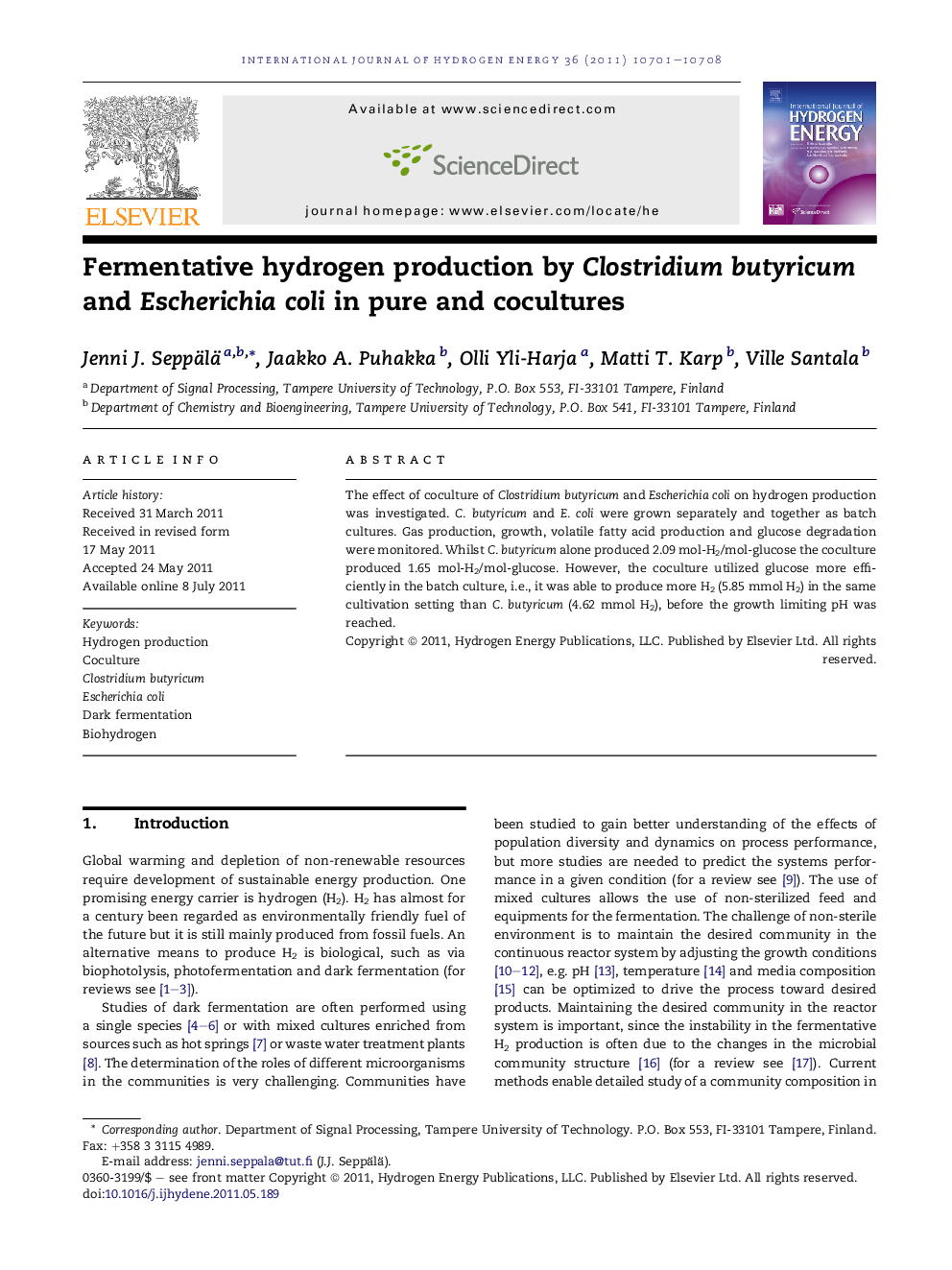| کد مقاله | کد نشریه | سال انتشار | مقاله انگلیسی | نسخه تمام متن |
|---|---|---|---|---|
| 1277538 | 1497576 | 2011 | 8 صفحه PDF | دانلود رایگان |

The effect of coculture of Clostridium butyricum and Escherichia coli on hydrogen production was investigated. C. butyricum and E. coli were grown separately and together as batch cultures. Gas production, growth, volatile fatty acid production and glucose degradation were monitored. Whilst C. butyricum alone produced 2.09 mol-H2/mol-glucose the coculture produced 1.65 mol-H2/mol-glucose. However, the coculture utilized glucose more efficiently in the batch culture, i.e., it was able to produce more H2 (5.85 mmol H2) in the same cultivation setting than C. butyricum (4.62 mmol H2), before the growth limiting pH was reached.
► Batch fermentations of C. butyricum and E. coli solely and as a coculture.
► E. coli produced 1.45, C. butyricum 2.09 and coculture 1.65 mol-H2/mol-glucose.
► Yield of H2 by C. butyricum solely was highest.
► Coculture used glucose most efficiently.
► Total amount of H2 produced by coculture was higher with than with pure cultures.
Journal: International Journal of Hydrogen Energy - Volume 36, Issue 17, August 2011, Pages 10701–10708